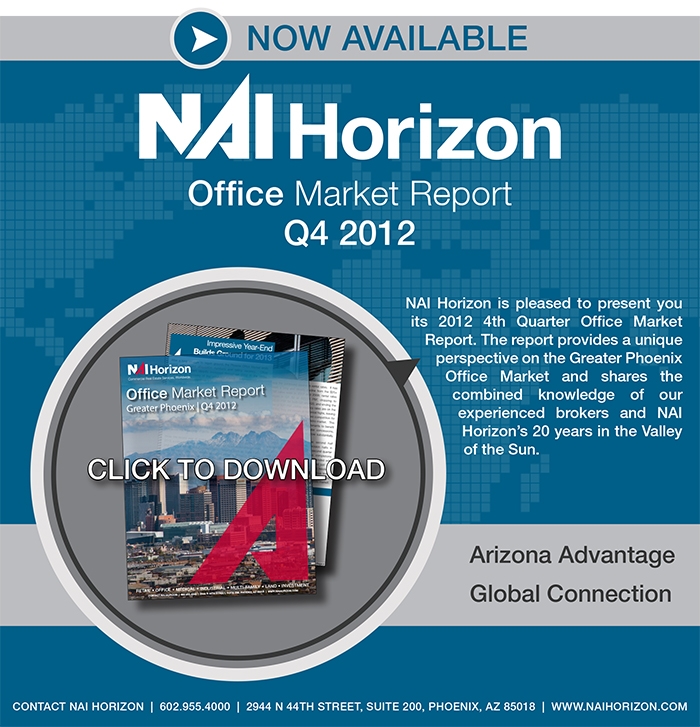After a long struggle to regain ground, the Phoenix Office Market ends 2012 with record absorption numbers and falling vacancy. Office sector employment steadily increased throughout 2012 in the Valley, aiding in the recovery of the wounded market. Improvement should be expected to continue into 2013, as the local housing market continues to improve and businesses move away from the uncertain pre-election period. The pace of improvement will likely be moderate compared to the sharp increases seen in the final quarter of 2012.
Total net absorption was the stand out of Q4 2012 with 1,582,903 SF absorbed, a level not seen in over five years. This notable increase helped mark 2012 as the first year since 2006 to post positive absorption numbers for all four quarters, ending the year with 3.25 million SF absorbed. Vacancy also headed in a positive direction falling to 20.4% for Q4, down from the 22.3% seen in the beginning of 2012. This decrease in vacancy is a hopeful sign for the future; vacancy levels have not been this low since the beginning of 2009, and peaked at 22.8% mid-year 2011.
While the record year of space absorbed leads the market strongly into 2013, a considerable percentage of this was due to a handful of large users and may not reflect all submarkets fairly. Tenants such as State Farm, QBE Insurance, and U.S. Foods absorbed close to 600,000 SF alone in 2012, making up almost 20% of the year-end total. As consistency is regained in the office market, the positive absorption figures can expect to even out among tenants in varying sizes and submarkets.
Somewhat clouding the positivity seen in absorption and vacancy figures was the continued decline in rental rates. It has been a long and steady decline from the $25+ PSF rates seen in 2007 and 2008; rental rates began in Q1 12 at $20.24 PSF, dropping to $20.07 PSF for both Q2 and Q3, and ending the year at $20 PSF. While vacancy rates are on the decline, they still remain at historical highs, leaving rental rates depressed until more competition for space occurs in the Phoenix Metro market. This has left considerable room for tenants to benefit from the lower rates and greater concessions, making it unlikely for rates to grow substantially.
Leasing activity declined in the second half of 2012, most likely due to decision halts in anticipation of the fiscal cliff. The second quarter of 2012 peaked with 624 lease completions and 2.6 million SF leased. The year ended with Q4 posting 500 completed leases and just 1.4 million SF leased. As the fiscal cliff is resolved, business activity should return to previous levels and the positive effects of job growth will begin to trickle down to the commercial real estate market.


